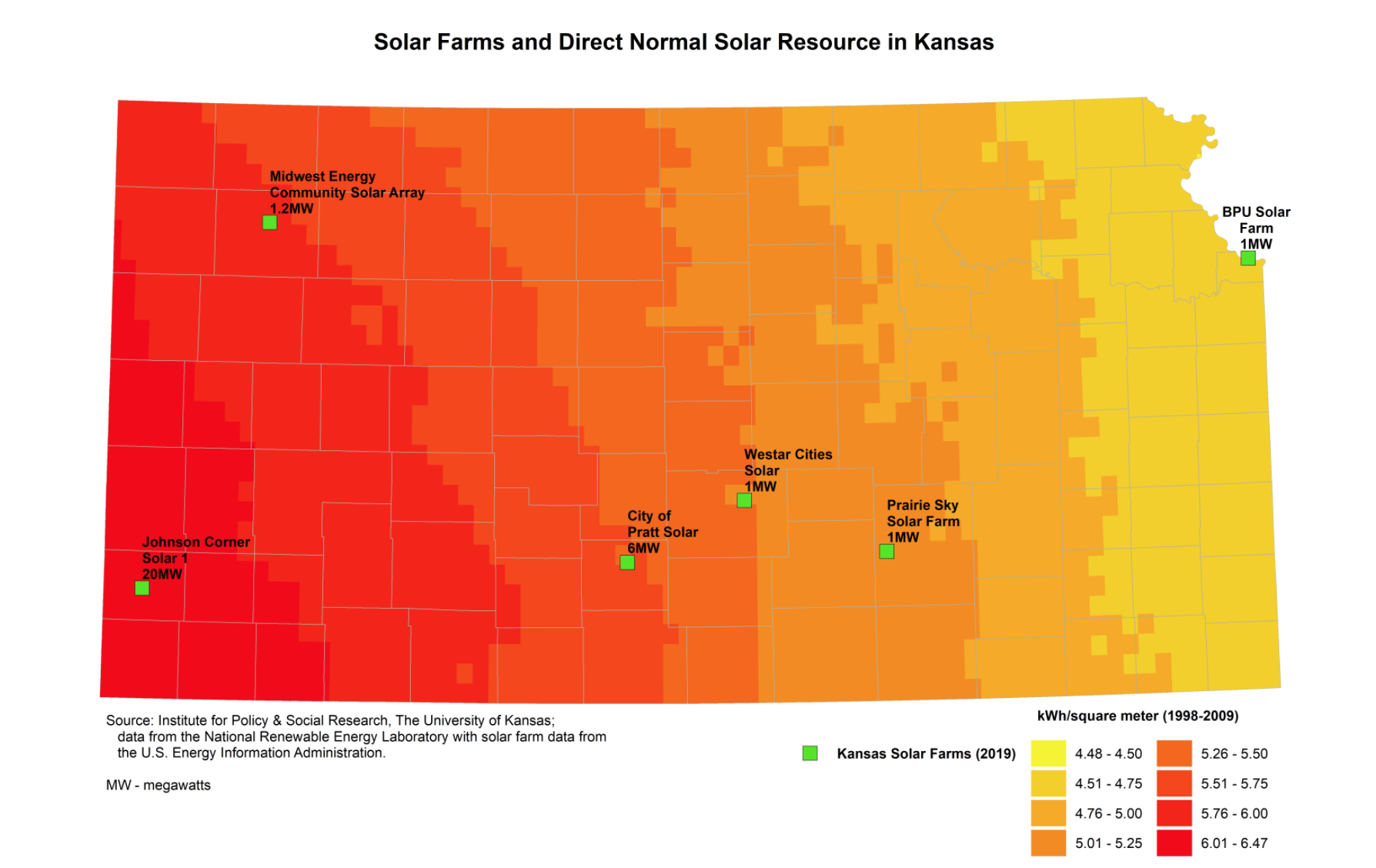New Kansas Statistical Abstract offers key data as Kansas weathers the pandemic

LAWRENCE — The 54th edition of the Kansas Statistical Abstract is now available online. In a year that brought the novel coronavirus pandemic and resulting economic turmoil, the KSA shares data on Kansas and the United States in 16 categories that provides context for the challenges Kansans are now facing and offers key information for local and state government leaders seeking the best paths forward for recovery and growth.
Developed by Institute for Policy & Social Research staff, the publication includes data up through 2019, or the most recent available data.
Some key findings:
Medical resources
As COVID-19 cases and hospitalizations rise across the country, the proximity of hospitals to communities and availability of hospital beds have become urgent questions. The KSA includes a chapter on Vital Statistics and Health, with a map of hospitals in Kansas as of 2018 and utilization of hospitals in Kansas, by county as of 2018, with a map showing admissions per bed. Understanding where hospitals are and the pattern of hospital use before COVID-19 helps Kansans anticipate challenges in health care access during COVID-19. Data on persons per physician in Kansas by county as of 2019 indicates that several counties do not have a physician, and in some counties, the ratio of persons to physicians exceeds 2000 to 1.
Digital divide
While many Kansans have known the benefits of a strong broadband internet connection — and the lack of such connection in many parts of the state — the pandemic brought the disparities in connectivity across Kansas into sharp relief. A map of broadband availability in Kansas in 2019 shows that many areas of Kansas lack the necessary infrastructure for high-speed internet connection. With that gap in connectivity comes problems for people who hope to attend school remotely, telecommute and video-call their loved ones who live far away. IPSR affiliates Wally Meyer, director of Entrepreneurship Programs in the KU School of Business; Germaine Halegoua, associate professor of film & media studies; and director Donna Ginther, Roy A. Roberts Distinguished Professor of Economics, plus several IPSR staff members, will undertake a comprehensive study of broadband in Kansas in the coming months.
Solar energy
In addition, as the World Meteorological Organization identifies 2011-2020 as the warmest decade on record, the KSA includes a new map showing commercial solar farms in Kansas. The map also displays the solar kilowatt hours per square meter average from 1998 to 2009 throughout the state. This measure indicates how much solar energy might be collected from a given place. As the map shows, western Kansas has a particularly high concentration of potential solar energy. A map of wind farms and wind resource potential in Kansas, also part of the chapter on Energy and Natural Resources, similarly shows that a considerable part of the state has excellent wind power density and identifies locations of wind farms in the state. These sources of energy offer an important alternative to fossil fuel-based energy as stakeholders consider ways mitigate anthropogenic climate change.
The 54th edition of the KSA honors the long history of this publication with a dedication to the memory of Thelma Helyar, editor of the Kansas Statistical Abstract from 1985 to 2003. She was born in Carshalton, Surrey, England, in 1929, and she died in Lawrence in November 2019. As the institute’s librarian from 1976 to 2003, Helyar took countless phone calls from stakeholders requesting data on Kansas.
The IPSR editorial team, including Jena Gunter, Genna Hurd, Whitney Onasch, Abigail Byrd and Xan Wedel, gathered, compiled, and in many cases, visualized available data from federal and state agencies. The online abstract is available in a single, 576-page PDF and an enhanced online edition, with individual chapters, tables and maps. The abstract includes data on agriculture; banking and finance; business, industry, and exports; climate; communications and information; courts, crime, and public safety; education; employment and earnings; energy and natural resources; government; housing and construction; income; parks and recreation; population; transportation; vital health; and a summary of key information about Kansas, the Sunflower State.
The 54th edition includes high-resolution image files for several maps. Users can reproduce these resources in presentations or publications with appropriate citation. With this edition, the abstract has now been available online at no cost for 20 years. Prior to online publication, theaAbstract was available on paper or CD-ROM for purchase.
“By offering the KSA free online we are able to provide a convenient volume of current data to Kansans at the state, county, and city levels,” says Gunter, assistant director.
Preparing the Kansas Statistical Abstract for publication during a pandemic came with unique challenges, with some data releases delayed and a higher-than-normal workload for the team. While compiling the KSA, IPSR also developed and maintained a website of COVID-19 research and resources, with regular briefings from Ginther, reports on county recovery efforts, briefs on the federal stimulus in Kansas, and galleries of maps and graphs with data updated on a regular basis.
Efforts to develop the 55th edition of the KSA are already underway.
“I’m hopeful that we will start to see the data from the 2020 Census as well as to learn more about the impact of COVID on our economy as more data become available,” said Wedel, who in addition to leading data collection for the KSA, serves as the lead for the Kansas State Data Center and participated in several efforts to ensure a complete count of Kansans in the 2020 Census.